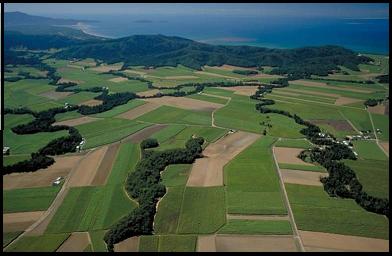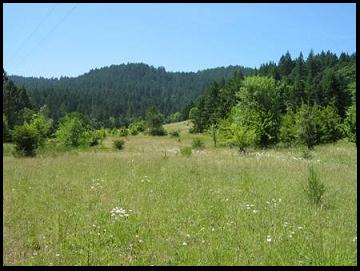 The ecological importance of edges has been noted and studied for over a century, beginning with Clements’ description of gradients between plant communities that he dubbed “ecotones” (Clements 1907). Later, it was noted that diversity and abundance were often higher near edges, both for birds (Lay 1938) and for game species, in general (Leopold 1933), leading to a general conception that edges were “good” and managers should manage for habitat heterogeneity. An almost complete paradigm shift started in the late 1970’s when studies showed that, although abundance and diversity may increase near edges for some taxa, predation and parasitism often increase as well, leading to the concept that edges may be an “ecological trap” with dire consequences for some species (Gates and Gysel 1978). This dynamic was even identified as a leading cause of a perceived decline in songbird abundance in eastern deciduous forests in the United States (Brittingham and Temple 1983, Wilcove 1985). In addition to these trap dynamics, habitat sensitive species were often found to avoid edges (e.g., Burke and Nol 1998), and so habitat quality near edges was considered to be of little value for the most sensitive species. These factors all led to a fundamental shift in how edges were viewed, especially by the conservation community. Instead of positive features on the landscape, edges were viewed as largely negative and the preservation of "core" habitat, far removed from the negative influences of habitat edges, was emphasized (e.g., Harris 1998).
The ecological importance of edges has been noted and studied for over a century, beginning with Clements’ description of gradients between plant communities that he dubbed “ecotones” (Clements 1907). Later, it was noted that diversity and abundance were often higher near edges, both for birds (Lay 1938) and for game species, in general (Leopold 1933), leading to a general conception that edges were “good” and managers should manage for habitat heterogeneity. An almost complete paradigm shift started in the late 1970’s when studies showed that, although abundance and diversity may increase near edges for some taxa, predation and parasitism often increase as well, leading to the concept that edges may be an “ecological trap” with dire consequences for some species (Gates and Gysel 1978). This dynamic was even identified as a leading cause of a perceived decline in songbird abundance in eastern deciduous forests in the United States (Brittingham and Temple 1983, Wilcove 1985). In addition to these trap dynamics, habitat sensitive species were often found to avoid edges (e.g., Burke and Nol 1998), and so habitat quality near edges was considered to be of little value for the most sensitive species. These factors all led to a fundamental shift in how edges were viewed, especially by the conservation community. Instead of positive features on the landscape, edges were viewed as largely negative and the preservation of "core" habitat, far removed from the negative influences of habitat edges, was emphasized (e.g., Harris 1998).
This paradigm shift was also accompanied by an explosion of research that began to challenge the new “edges are bad” paradigm with an avalanche of often contradictory results, and as the century turned, a new paradigm emerged that seemed to suggest that edge effects may not be a particularly useful concept because the responses of organisms to edges were idiosyncratic and unpredictable (Ehrlich 1997, Cadenasso et al. 2003, Ewers and Didham 2006). Many studies emerged that questioned some long-standing assumptions from the edge literature, such as uniformly generally predation rates (Chalfoun et al. 2002) and the consistency of certain species responses (Schlossberg and King 2008).
 Despite the conflicting results that have emerged from the edge literature, our 10 years of research suggests that edge responses are more consistent than generally believed (
Despite the conflicting results that have emerged from the edge literature, our 10 years of research suggests that edge responses are more consistent than generally believed (